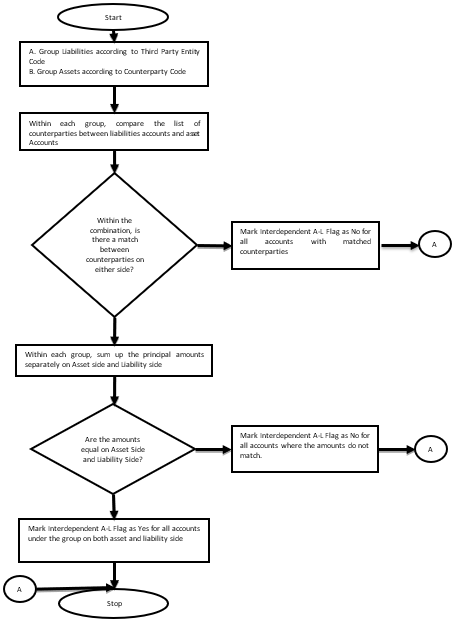5.3 Interdependent Assets and Liabilities
As per BIS and EBA guidelines, certain assets and liabilities can be paired together and called interdependent, if they satisfy the following criteria:
- The individual interdependent asset and liability items are identifiable.
- The maturity and the principal amount of the liability and its interdependent asset must be the same.
- The bank is acting solely as a pass-through unit to channel the funding received (the interdependent liability) into the corresponding interdependent asset.
- The counterparties for each pair of interdependent liabilities and assets must not be the same.
Within the EBA jurisdiction, the centralized regulatory savings fulfill the criteria above and can be recognized as interdependent assets and liabilities. In this system, some retail/other deposits are placed by the bank with a central/public authority.
The corresponding centralized amount of deposits is managed by the public authority in a dedicated, ad-hoc fund. The public institution is bound by the national law to reimburse credit institutions during a decrease in the amount of regulated savings due to observed withdrawals (less than 10 days between the withdrawal and the reimbursement by the public institution), thus incurring liquidity risk on behalf of the credit institution.
LRS considers loans on the asset side and deposits on the liabilities side in this feature. A result flag called ‘Interdependent Asset-Liability Flag’ is updated for each such pair which has a possibility of being linked. When Interdependent Asset-Liability Flag is set to Yes, the asset receives a 0% RSF and the liability receives a 0% ASF. In effect, given that the asset and liability are matched, they do not pose a liquidity risk and hence are excluded in the NSFR calculation. When Interdependent Asset- Liability Flag is No, the asset or liability receives appropriate RSF or ASF factors depending on other attributes.
Here is the process flow for the pair identification:
Figure 4-2 Process Flow for the Pair Identification
